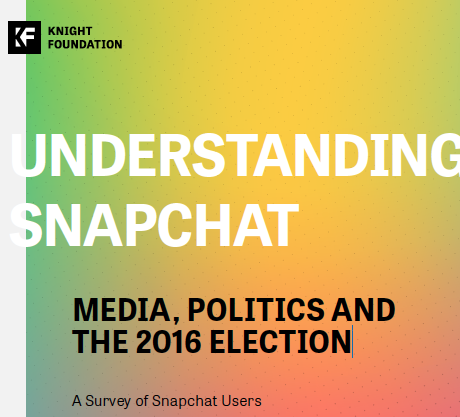Chat apps overtook traditional social networks in global audience size by 2015 but caught on late in the U.S. because of low rates of mobile phone text messaging compared with other countries. By 2016, however, apps such as Snapchat, Facebook Messenger, WhatsApp and Kik took over the U.S. app charts, and many were determined to engage voters in political discourse.
As apps such as Snapchat become increasingly popular, it is vital to understand how they may influence the way in which people engage with one another and their democracy. Candidates, for example, are bypassing the media to give people direct access. Media, in turn, are coming up with creative strategies to reach new audiences using these platforms.
Released in 2011, Snapchat is a mobile messaging app that allows users to send a photo or video (with or without text captions or drawings) to someone or contribute to the Stories section of the app. The content is accessible for only a limited time. This allows users more control over the visual content they share. The app also allows media companies to post content in its Discover section.
Snap Inc., the app’s parent company, reported 158 million daily active users at the end of 2016, with an average of 2.5 billion “snaps” created every day. Snap went public on March 2, 2017 and opened with a market valuation of $33 billion.
Motivating Questions
With the increased presence of Snapchat into the social media sphere, we asked:
- How do Snapchat users use the app, especially for news and politics?
- How do Snapchat users interact with the news media and political figures on the app?
- What do Snapchat users think of the credibility of journalists and politicians using the app?
- What do Snapchat users like and dislike about politics on the app?
- Do Snapchat users believe they gain knowledge about politics from the app?
